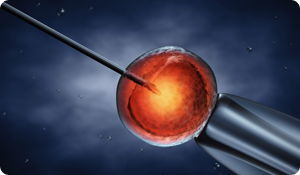
Are you trying to have a baby? Consider this story: Marybeth Scheidts and David Levy tried for years to have a baby, without success. Then they were selected to participate in a study of an assisted reproductive technology called Next Generation Sequencing, organized by Reprogenetics (US and UK). Next Generation Sequencing, or NGS, led to the birth of the couple's son Connor in May of 2013, providing the miracle they had dreamed of for so long.
Increasing Maternal Age
Today, a growing number of women are focusing on their careers first and putting plans for a family on the back burner. However, some couples are finding that when they're finally ready to have a child, their chances of doing so naturally have diminished. In vitro fertilization (IVF), in which a women's eggs are fertilized a lab and then transferred to the patient's uterus, offers some hope. But each year the likelihood increases that chromosome abnormalities in the embryos (fertilized eggs in their earliest stage of development) will prevent implantation in the uterus or lead to miscarriage. This poses a roadblock for many couples.
While genetic screening tests (called preimplantation genetic diagnosis, or PGD) can help identify potential obstacles to a healthy and successful pregnancy, today, new technologies, including NGS, are making these genetic screening tests much more accurate—and improving IVF outcomes, says Santiago Munné, MD, Founder and Director of Reprogenetics.
New Hope for Older Women
The process works like this: The embryos are biopsied (tissue is removed for analysis), and then NGS sequences part of the embryos' DNA to quickly and effectively identify a variety of possible abnormalities. The technique also helps determine which embryos have the best chance of leading to a healthy baby, according to Dagan Wells, MD, of the NIHR Biomedical Research Centre at the University of Oxford, Reprogenetics UK and US.
The screening process takes just 16 hours to complete, adds Wells, and its accuracy prevents the need to transfer multiple embryos in the hopes that one will take.
Turning Practice Into Reality
From a practical standpoint, what this means is that couples struggling with infertility may increase their odds of having a baby with IVF more quickly, as Scheidts and Levy discovered firsthand: "After trying for over five years naturally and with medical treatment, we finally have our little miracle and are a full, loving family," says Scheidts, who took part in a study on the effects of NGS at two US clinics, NYU (NY) and Main Line Fertility (PA). Another couple that participated in the study is also expecting their baby soon.
While more research needs to be done on NGS and its possible applications for reproduction, Wells and his colleagues are hopeful that in the near future, this process will be able to bring about many more IVF success stories.
So if you've been struggling to have a baby, it's worth talking to your doctor about NGS for IVF, and finding out when it might be available to the general public.
Santiago Munné, MD, reviewed this article.
Sources:
Dagan Wells, MD, NIHR Biomedical Research Centre at the University of Oxford,
Reprogenetics UK and Reprogenetics LLC. Email interview, Sept. 3, 2013.
http://www.obs-gyn.ox.ac.uk/research/dagan-wells
Marybeth Scheidts. Email interview, Aug. 3, 2013.
Santiago Munné, MD, Founder and Director of Reprogenetics. Email interview, Sept. 11,
2013. http://www.reprogenetics.com





